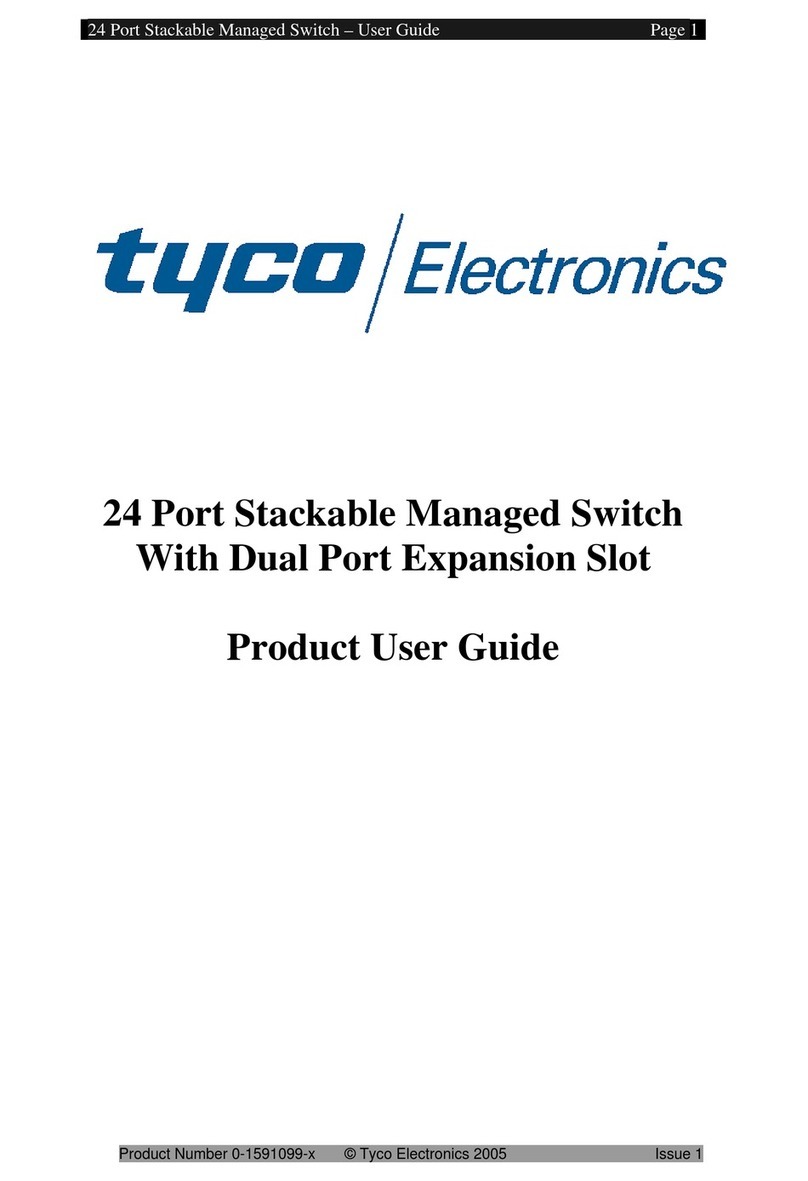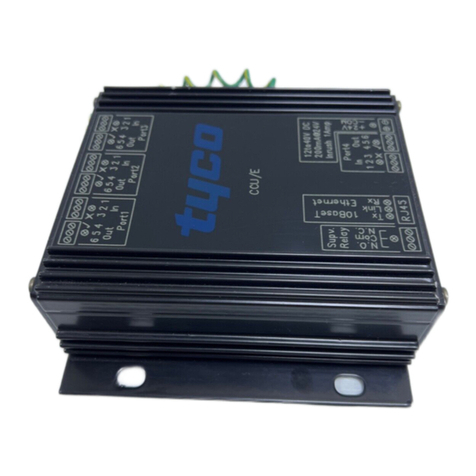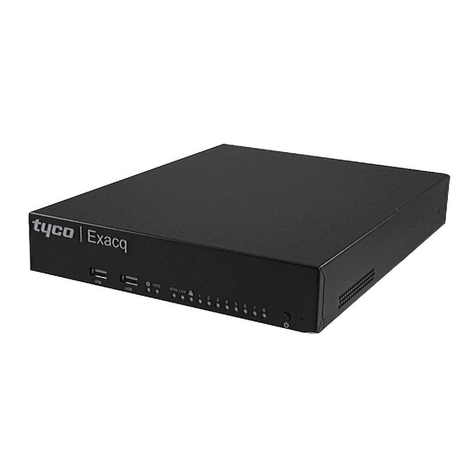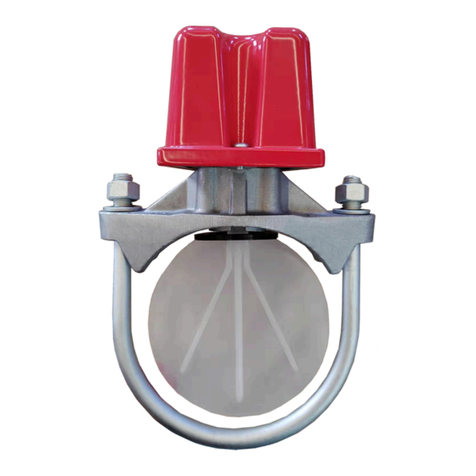
Operation
The TYCO Model TOSY Outside Screw and Yoke Valve
Supervisory Switch is mounted with carriage bolts and a
bracket. The normal condition is the valve is fully open,
and the supervisory switch trip rod is in the groove of the
valve stem.
Closing the valve causes the trip rod to ride up out of the
groove and activates the switch. Removing the switch
from the valve causes the spring to pull the trip rod in the
other direction which also activates the switch.
Installation
The TYCO Model TOSY Outside Screw and Yoke Valve
Supervisory Switch must be installed according to the
instructions in this section.
Installing the ½ inch to 2 ½ inch size
range
Before you begin:
• The ½ in. to 2 ½ in. size switch range must be installed
according to the instructions in this section.
1. Choose an installation location with adequate
clearance for installing or removing the switch.
2. Position the indicator valve to the FULL OPEN
position.
3. Locate the switch with the bracket near the hand
wheel as shown in Figure 3. Avoid creating a pinch
point between the wheel and the switch.
4. Loosen the locking screw that holds the trip rod
in place. Adjust the rod length to extend past the
valve screw but does not contact the bracket clamp
bar.
Note: If the trip rod length is too long,
loosen the locking screw and remove the
trip rod from the trip lever. Break off the
1 in. (2.54 mm) excess length at the notch
using pliers. Re-install the trip rod and repeat
step 4.
5. Tighten the locking screw to 5 in-lbs (0.56 N·m)
minimum to secure the trip rod in place, and seal
the enclosure.
6. Mount the switch and finger-tighten the carriage
bolts on the clamp bar assembly.
Note: Do not tighten the assembly in place at
this time.
Note: J-hooks are supplied to replace the
carriage bolt and clamp bar for valves with
limited clearance.
7. Deburr and smooth the edges of the groove, to
allow the trip rod to slide in and out of the groove
without catching as the valve opens and closes, and
to prevent damage to the valve packing.
8. To make final adjustments, loosen the two screws
on the bracket a small amount, and use the micro-
adjustment feature as shown in Figure 3. Final
adjustments are complete when with the valve in
the open position, there is no continuity between
COM and NO terminals, and the plungers are
depressed by the actuator.
Figure 3: ½ in. to 2 ½ in. size range installation
Callout Description
3 Housing
7 Bracket
10 Bracket lock screw
9. Tighten the adjustment screws and all the
mounting hardware to 20 in-lbs (2.26 N·m)
minimum. Verify the rod slides in and out of the
groove easily.
10. Verify the switch activates within two turns when
the valve is operated from the FULL OPEN position
toward the CLOSED position.
11. Reinstall the cover and tighten the tamper resistant
cover screws to a minimum 15 in-lbs (1.69 N·m) to
form a proper seal.
Model TOSY Outside Screw and Yoke Valve Supervisory Switch, APAC Only 3



























